Ethereum staking is evolving with the introduction of Distributed Validator Technology (DVT). Instead of relying on just one node to validate and approve transactions, DVT spreads this task across multiple nodes. This setup is more reliable because even if a few nodes face problems, the others can continue the validation process without any hitches.
The magic behind DVT lies in its ability to distribute private keys, which enhances validator security. Instead of storing the entire private key on a single node, in a distributed validator, it's divided into key shares and distributed among several nodes in a group known as a "cluster". This means no single node has the complete key, making it much harder for potential attackers to compromise a validator. Moreover, even if only some nodes in the cluster are operational, they can collaborate and perform the necessary validations, as only a threshold of more than 66% of key shares is required to perform validator duties.
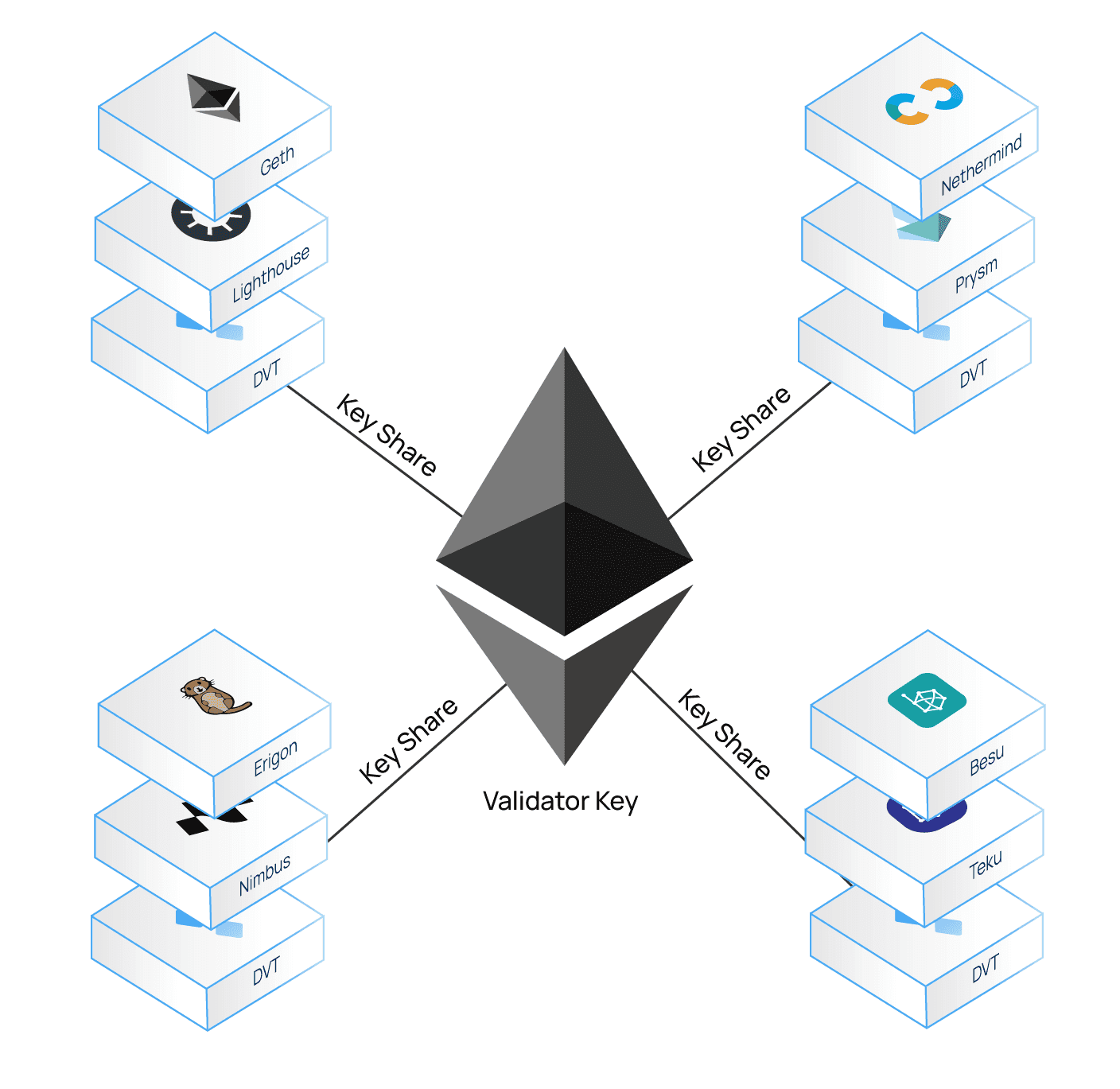
The graphic below also illustrates a DVT framework on the Ethereum network, emphasizing its adaptability and the seamless collaboration between Validator Clients (VCs) and Beacon Nodes (BNs).
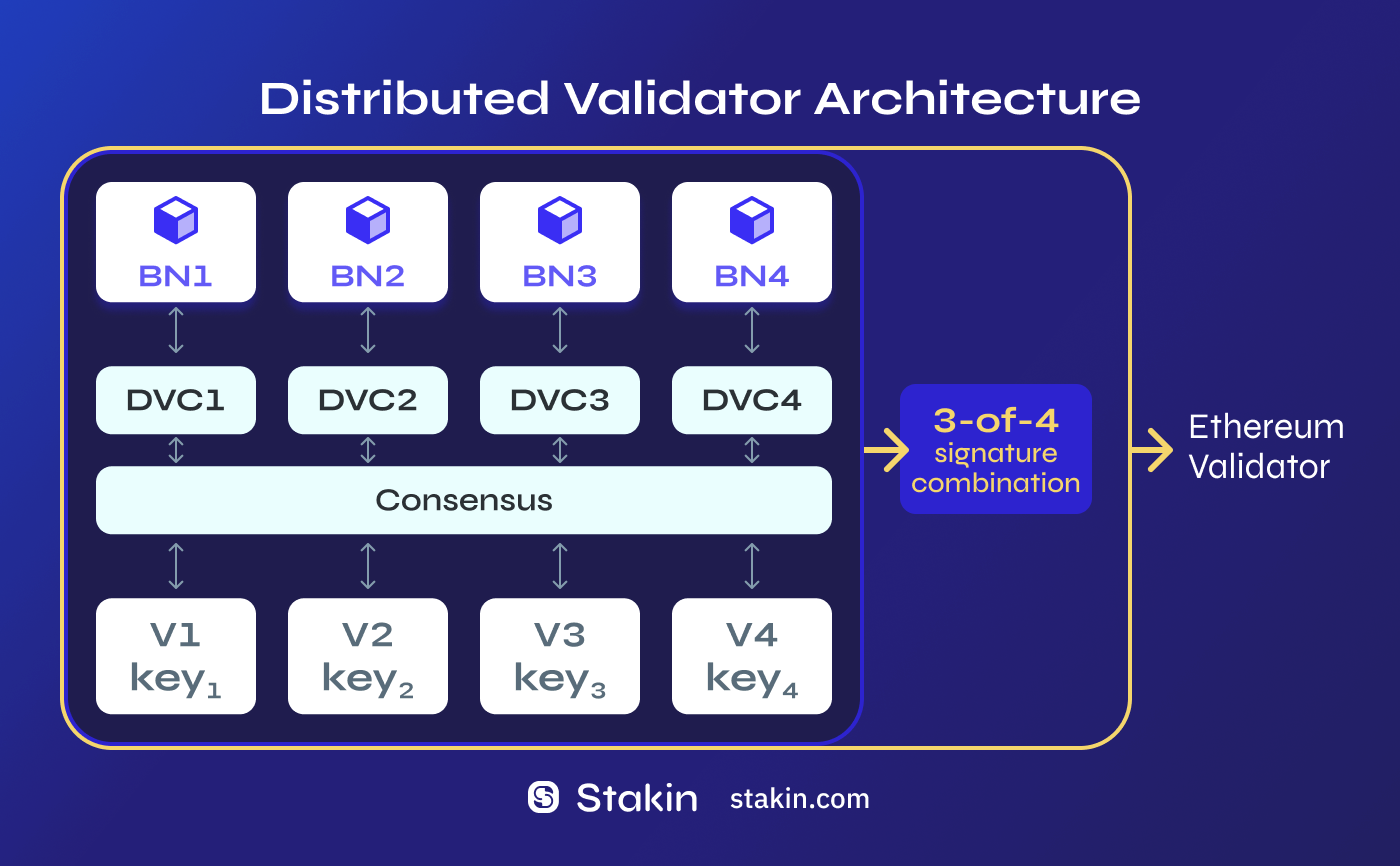
Node Distribution: DVT represents decentralization. Instead of one node carrying out validation, multiple nodes work together to do so.
Consensus Mechanism: A three-fourths consensus among nodes is pivotal for validation approval, safeguarding the validator's reliability in the event one node is compromised or offline.
Redundancy & Resilience: The multi-node setup ensures that there is no single point of failure. It is seamless for other nodes to step in when a node is disrupted.
DVT Mechanics
The operation of DVT encompasses several components:
- Shamir's Secret Sharing: Validator keys are split and distributed to nodes. The full key can be recreated by merging their individual parts
______________________________________________________
Note that this component’s operation can be different for every network based on its own architecture.
______________________________________________________ - Threshold Signature Scheme: This determines the required key shares for signing, often in a ratio of 3 out of 4.
- Distributed Key Generation (DKG): Distributed key generation (DKG) is a cryptographic process in which multiple parties contribute to the calculation of a shared public and private key set.
- Multiparty Computation (MPC): The full validator key is secretly generated using MPC. No individual operator knows the full key—only their specific portion of it.
- Consensus Protocol: One node is chosen to attest on behalf of validators to propose a block. Once enough key shares are gathered, the block is proposed on Ethereum.
Benefits of DVT
- Enhanced Security & Improved Resilience
Collaborative Validation: By distributing the validation process across multiple nodes, the system becomes harder to compromise. Since three key shares are needed to verify on behalf of a validator, compromising a validator would require compromising at least three of four nodes in the committee/cluster, which is extremely difficult to achieve.
Fragmented Private Key: In DVT, the validator's private key (a critical security component) is segmented and distributed across multiple nodes. This distribution is crucial for maintaining the security of the validator. If a single node is compromised, the attacker does not gain full access to the private key.
Fault Tolerance: DVT's design inherently contains fault tolerance, ensuring system continuity even when some nodes are compromised or go offline. - Decentralization
No Central Control: Existing, single-node validators often have a central control point, which can become a bottleneck or single point of failure. DVT distributes these risks, resulting in a more open, decentralized system without a single point of failure. - Inclusivity
Accessibility: DVT simplifies the staking process. With its distributed nature, barriers to entry are reduced, allowing more participants in the staking process.
Collaborative Participation: It allows for collaborative staking, where multiple entities can participate together, further promoting inclusivity.
Anti-Correlation: With multi-node validators, you can have different node configurations such as multi-client, multi-geo, or hybrid environments that reduce the risk of correlated failures and improve the overall decentralization of the network.
Potential Drawbacks Includes
- Operational Complexity
Additional Nodes: Introducing DVT inherently means adding more nodes to the system. This can introduce complexities in management and monitoring.
Coordination Overhead: With multiple nodes, coordination becomes crucial. Ensuring all nodes work seamlessly can be a challenging task - Software Centralization
Introduction of a software layer: As DVT becomes popular, there is a risk of having too many node operators using one or a few DVT solutions. This is partly mitigated as there are already many DVT solutions coming to market. While DVT helps decentralization at the validator level, it may introduce some centralization at the software level. - Potential Delays
Consensus Time: Achieving consensus among multiple nodes might introduce latency. This is especially true if there's a network delay.
DVT with Real-World Use Cases
DVT holds the potential to enhance the security and efficiency of various processes, including decentralized finance (DeFi) and liquid staking. By leveraging DVT solutions, entities involved can enhance security, ensuring transactions are validated by multiple nodes. With multiple nodes validating transactions, the process becomes more robust against failures while reducing slashing risks. Liquid staking providers, who care about reliability, security, and decentralization for their staked ETH, are implementing DVT solutions.
Additionally, the adoption of DVT promises to improve the overall decentralization and resiliency of Ethereum (and other PoS networks). By lowering the barriers to entry for smaller validators, while reducing the maintenance and risks associated with running highly effective validators, DVT allows more individuals and entities to participate in running validators.
As DVT continues to advance and mature, its application in these key areas is expected to have a profound impact, enabling more secure, transparent, and efficient operations in diverse industries.
Stakin's involvement with DVT and its Key players
Since 2021, Stakin has been an integral part of shaping the PoS landscape, from active participation in testnets and Ethereum nodes to influential roles in DAOs. Our collaboration with Obol Labs and SSV Network demonstrates our commitment to championing the potential of DVT in the Ethereum domain. Collaborations of this nature reflect our active role in shaping the future of staking.
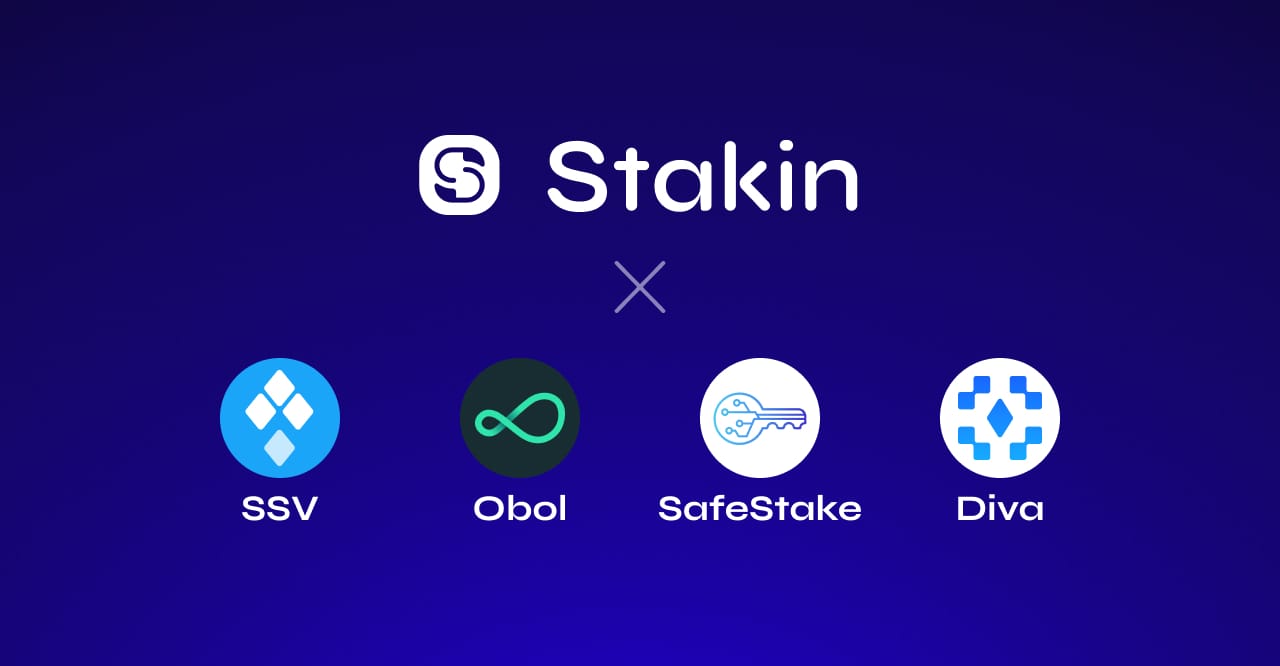
Obol Labs, ssv.network, Diva, and SafeStake are among the innovators driving this transformation. Continuing our commitment to Ethereum staking, Stakin is keen to collaborate with emerging DVT solutions.
Competitive Landscape between SSV, Obol, SafeStake, and Diva Staking
First, let’s dive into the overview of each network/protocol to understand the key differences in their nature of solution: SSV NetworkThe ssv.network operates as a decentralized, open-source ETH staking infrastructure, leveraging Secret Shared Validator (SSV) technology, also termed DVT. Their main offering is a simple, scalable, and decentralized platform developers can use to launch DVT-powered staking applications. The network of node operators ensures active-active redundancy with seamless customization that bolsters the security and operational efficiency of Ethereum validators
Obol Network
Obol Labs developed the first middleware implementation of distributed validators, Charon. Obol Labs is dedicated to enhancing proof-of-stake infrastructure for public blockchain networks, with an emphasis on Internet Bonds, Distributed Validator Technology, and Multi-Operator Validation. Their main project, the Obol Network, aspires to bolster trust-minimized staking through multi-operator validation and facilitate the adoption of DVT through a collection of open-source tools.
SafeStake
SafeStake presents itself as a decentralized staking framework, tailored to optimize staker rewards by maintaining secure and consistent online validators for Ethereum Proof-of-Stake consensus. It offers varied levels of participation, allowing users to join by running a single or pooled validator with deposits ranging from as low as 0.01 ETH up to 32 ETH.
Diva Staking
Distinct from its peers, Diva focuses on being a fully integrated Liquid Staking solution powered by DVT. Its combination of liquid staking, non-custodial operations, and advanced distributed validation makes it one of the other key players as a liquid staking platform
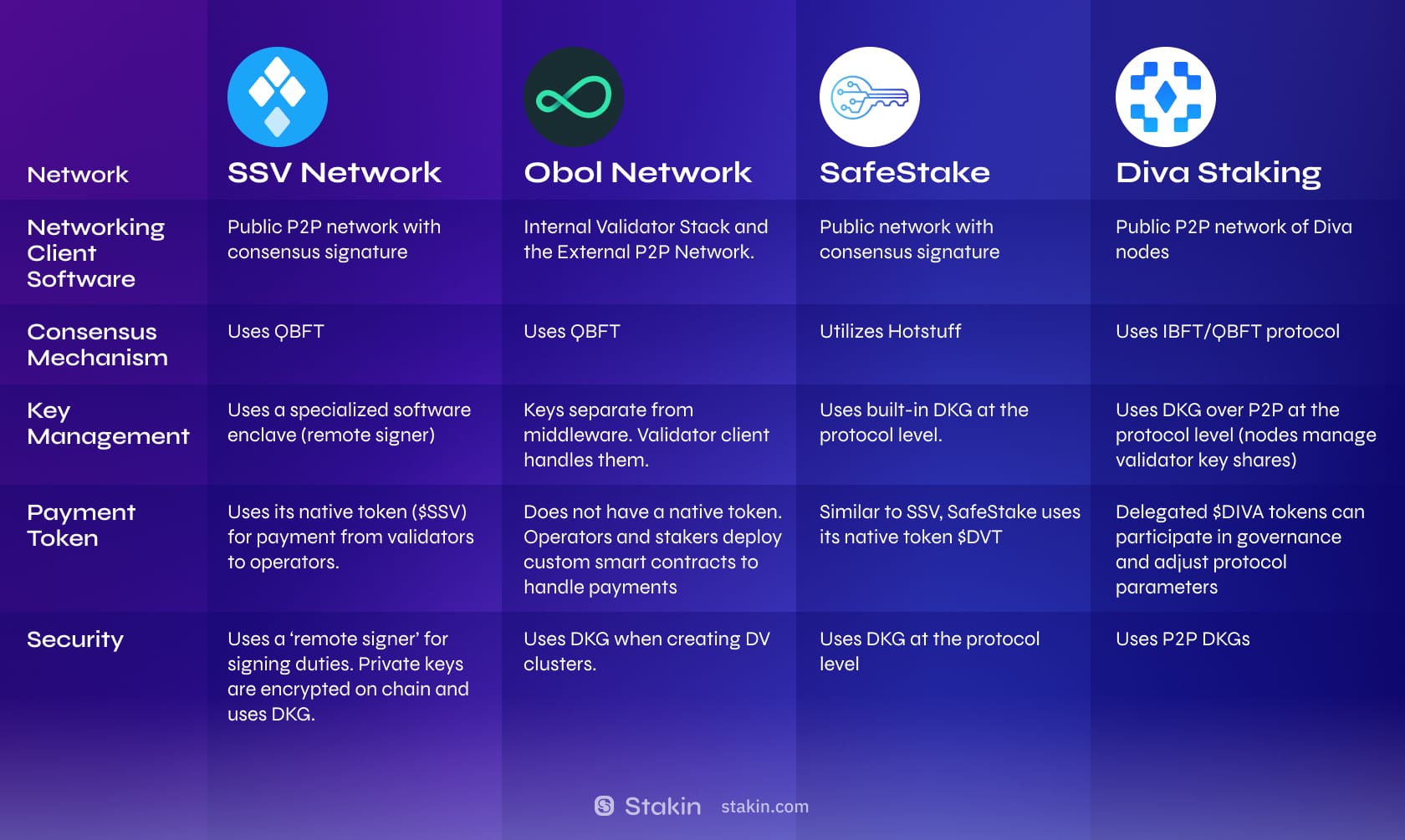
It's also to note that Shamir's Secret Sharing coupled with MPC and threshold signing plays a vital role in security.
Ethereum staking is changing, and Distributed Validator Technology (DVT) is at the heart of that change. Thanks to the hard work of teams at Obol Labs, ssv.network, Diva, and SafeStake, DVT is showing us a more secure and efficient way to validate transactions. At Stakin, we're excited about these advancements and are dedicated to playing our part in this journey. For institutions keen on exploring and adopting DVT, now is an opportune time. The benefits are clear: a more resilient, secure, and inclusive staking process. We invite institutions to join us at Stakin, combining our expertise and resources to strengthen the staking ecosystem. Together, we can lead the way in this exciting decentralized staking future.
Special Thanks to Contributors
We extend our gratitude to contributors Juan, Brett & other teammates at Obol Labs, Chris from SafeStake, Guillaume & Prada from Diva Staking, and Matty from SSV Network for enriching this article on Distributed Validator Technology (DVT). Their insights and expertise are invaluable to our community.
Twitter:
Obol Labs
SafeStake
Diva Staking
SSV Network
About Stakin
Stakin is an infrastructure operator for Proof-of-Stake (PoS) blockchains offering secure, reliable, and non-custodial staking services. The company enables cryptocurrency holders to earn interest on their assets and take part in decentralized governance while remaining in possession of their own cryptocurrencies.
Stakin serves institutional crypto players, foundations, custodians, exchanges as well as a large community of individual token holders. Driven by demand from institutional customers and the community, Stakin provides services for a wide range of networks including leading ecosystems such as Ethereum, Cosmos, Solana, Near, Polygon, Polkadot, Aptos, Sui, and more.
For more information about Stakin, visit the Website, Twitter, Blog, or join the Telegram community.

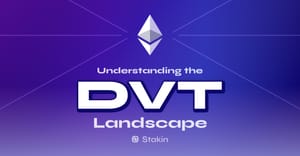
Join the conversation